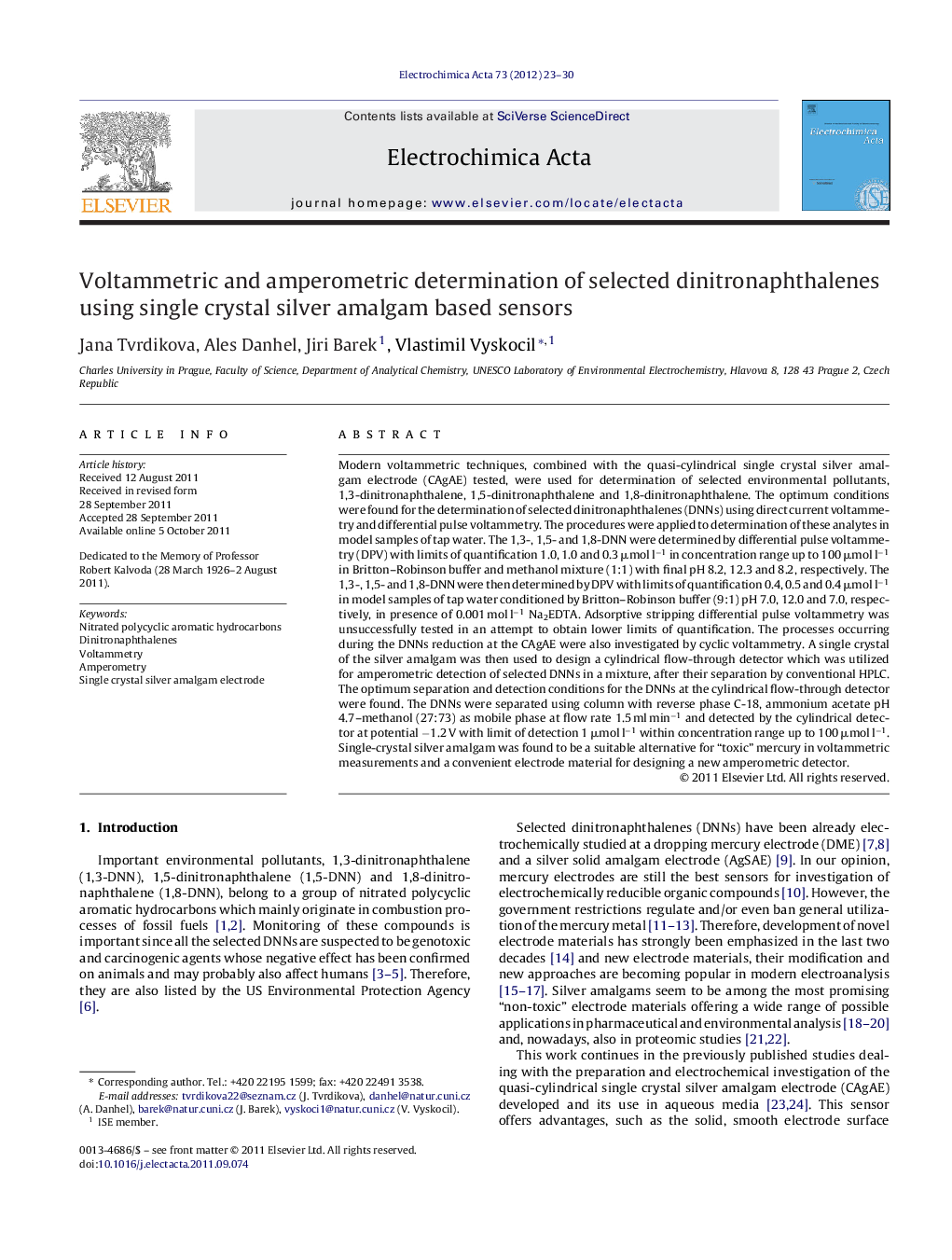| Article ID | Journal | Published Year | Pages | File Type |
|---|---|---|---|---|
| 188258 | Electrochimica Acta | 2012 | 8 Pages |
Modern voltammetric techniques, combined with the quasi-cylindrical single crystal silver amalgam electrode (CAgAE) tested, were used for determination of selected environmental pollutants, 1,3-dinitronaphthalene, 1,5-dinitronaphthalene and 1,8-dinitronaphthalene. The optimum conditions were found for the determination of selected dinitronaphthalenes (DNNs) using direct current voltammetry and differential pulse voltammetry. The procedures were applied to determination of these analytes in model samples of tap water. The 1,3-, 1,5- and 1,8-DNN were determined by differential pulse voltammetry (DPV) with limits of quantification 1.0, 1.0 and 0.3 μmol l−1 in concentration range up to 100 μmol l−1 in Britton–Robinson buffer and methanol mixture (1:1) with final pH 8.2, 12.3 and 8.2, respectively. The 1,3-, 1,5- and 1,8-DNN were then determined by DPV with limits of quantification 0.4, 0.5 and 0.4 μmol l−1 in model samples of tap water conditioned by Britton–Robinson buffer (9:1) pH 7.0, 12.0 and 7.0, respectively, in presence of 0.001 mol l−1 Na2EDTA. Adsorptive stripping differential pulse voltammetry was unsuccessfully tested in an attempt to obtain lower limits of quantification. The processes occurring during the DNNs reduction at the CAgAE were also investigated by cyclic voltammetry. A single crystal of the silver amalgam was then used to design a cylindrical flow-through detector which was utilized for amperometric detection of selected DNNs in a mixture, after their separation by conventional HPLC. The optimum separation and detection conditions for the DNNs at the cylindrical flow-through detector were found. The DNNs were separated using column with reverse phase C-18, ammonium acetate pH 4.7–methanol (27:73) as mobile phase at flow rate 1.5 ml min−1 and detected by the cylindrical detector at potential −1.2 V with limit of detection 1 μmol l−1 within concentration range up to 100 μmol l−1. Single-crystal silver amalgam was found to be a suitable alternative for “toxic” mercury in voltammetric measurements and a convenient electrode material for designing a new amperometric detector.
Graphical abstractFigure optionsDownload full-size imageDownload as PowerPoint slideHighlights► Development of the single crystal silver amalgam based sensors. ► Utilization of sensors for voltammetric and amperometric detection. ► Voltammetric methods for determination of selected dinitronaphthalenes. ► Determination of selected dinitronaphthalenes in tap water model samples. ► Amperometric detection of dinitronaphthalenes using HPLC-ED.
